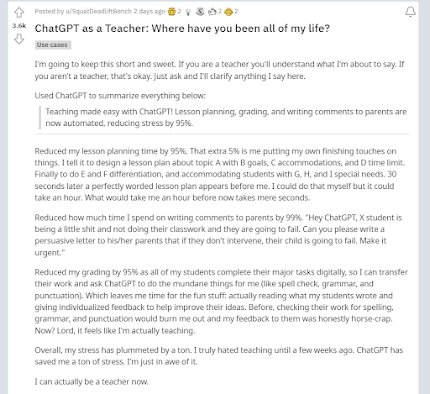Hello everyone!
I hope you’re having a productive Wednesday.
Today, I would like to talk about the use of project-based learning (PBL) when teaching English as a foreign language, what the research says, and the challenges arising from it.
Project-based learning is a student-centered teaching method that emphasizes learning through the completion of real-world projects. Students work on projects that require them to research, plan, design, and present their work to the class. PBL is an effective way to teach English as a foreign language because it engages students in authentic communication and problem-solving.
Challenges of Using Project-Based Learning in the Classroom
One of the benefits of using PBL in the English language classroom is that it allows students to use the language in a meaningful context. However, before delving into the use of PBL in the classroom, let’s explore some challenges. Although project-based learning (PBL) can be an effective way to engage students in active, hands-on learning, there are also several challenges associated with its implementation in the classroom. Some of these challenges include:
- Student engagement. While PBL can be highly engaging for some students, others may struggle to stay motivated or focused on long-term projects.
- Time management. PBL often requires a significant amount of time to plan, design, and implement, which can be challenging for teachers who are already facing time constraints.
- Resource constraints. PBL may require additional resources, materials, or equipment that are not readily available in all classrooms or schools.
- Assessment. Evaluating student learning and assessing project outcomes can be more difficult in a PBL environment, as there may not be clear criteria for success or standardized assessments.
Overall, these challenges can be overcome with careful planning, clear communication, and a willingness to experiment and adapt to the needs of individual students and classrooms. Regardless of its challenging nature, project-based learning yields considerable positive results.
Why Use Project-Based Learning in Your Classroom?
According to a study by Novitas-ROYAL (Research on Youth and Language), integration of real-life-based and learner-centered methods like project-based learning (PBL) into rural English classes may help improve the quality of ELT in such contexts. PBL also helps students develop critical thinking and problem-solving skills, which are essential for success in today's global economy.
Source: Venngage
To use PBL in the classroom, the teacher should first choose a real-world problem or issue that students are interested in. For example, students can work on a project that involves designing a website or creating a marketing campaign for a new product. The teacher should then provide the necessary language input and support to help students complete the project successfully.
During the project, students should work in groups to research, plan, and design their project. They should also practice presenting their work to the class. This process allows students to use the language in an authentic context, and it also helps them develop teamwork and collaboration skills.
Research has shown that PBL is an effective teaching method for English as a foreign language. A study by Wang (2016) found that students who participated in PBL projects scored higher on English language tests than students who learned through traditional teaching methods. Another study by Zhang (2018) found that PBL improved students' English language proficiency and their ability to use the language in real-world situations.
Concluding Thoughts
In conclusion, I think project-based learning is an effective way to teach English as a foreign language. It provides students with opportunities to use the language in a meaningful context and helps them develop critical thinking, problem-solving, and collaboration skills. As a student of foreign languages and teaching, I strongly recommend using PBL in an English language classroom.


